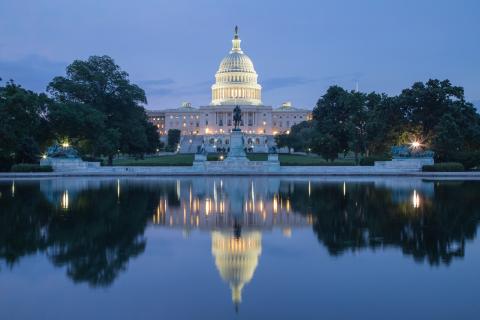- Home
- IBTTA Insights
- Two Toll Projects that Will Make a Critical Difference
Stories
Two Toll Projects that Will Make a Critical Difference


Last week was Infrastructure Week and more than 150 organizations raised the public’s awareness on the nation’s infrastructure crisis by holding events, lobbying legislators and posting articles online and in the media.
The Hill, posted an article entitled Five Infrastructure Emergencies, that included two tolled facilities in a shortlist of projects that absolutely have to be built, right now.
“Advocates for investing in the nation’s infrastructure are hesitant to single out certain projects as deserving priority over others, arguing that sustained funding and attention is needed equally across the board,” The Hill reports. “But there are some crumbling structures threatening both the economy and public safety that are just too urgent not to point out.”
Highway Infrastructure: It’s About Time
Time is one of the most important dimensions in the continuing battle over infrastructure funding crisis. And the urgency in The Hill’s coverage captures the stunning difference in time scale between policy and practice.
In Congress, it was a victory when legislators passed the country’s first long-term funding bill in a decade. A qualified victory, because the funds still fall short of what’s needed and only cover three years of the bill’s five-year horizon. But a victory nonetheless.
Out in the congressional districts that send legislators to Washington, urgency is measured in the minutes per day and hours per week that individual commuters across the country lose on congested roads that are long overdue for major repairs.
The waste adds up to seven billion hours, three billion gallons of fuel, and $160 billion per year, according to the latest Annual Urban Mobility Scorecard by the Texas Transportation Institute.
Two Toll Projects That Will Make a Difference
But here’s the problem with big, dramatic numbers: They’re so big that they’re hard to connect back to the front-line realities that tolling and other forms of user financing set out to solve. That perception gap points back to the advice IBTTA members received from news anchor Max Smith of WTOP in Northern Virginia, speaking to the association’s 2016 Transportation Policy and Finance Summit in Washington earlier this year:
“You have to explain it in a way that maybe uses the words the driver says,” he said. “‘Mile Marker 135’ doesn’t do it for a lot of them,” but users will see themselves in the picture if a spokesperson just points to that exit over to the left. Or if a national newspaper focuses in on a bridge that tens of thousands of people think of as their daily lifeline—or their own, personal highway bottleneck.
That’s why it’s so important that The Hill centered its coverage on two key projects, the Brent Spence Bridge between Cincinnati and Covington, KY, and the I-10 bridge replacement over the Mobile River in southwest Alabama.
The 53-year-old Brent Spence carries 4% of the country’s gross national product, and became a poster child for President Obama’s push for infrastructure investment in 2011. "It's in such poor condition, it's functionally obsolete," he said at the time.
The bridge “was only designed to carry 80,000 vehicles per day,” The Hill notes, citing the Ohio Department of Transportation. It “carried 150,000 vehicles per day in 2006, causing serious delays for commuters and businesses on a daily basis, with volume expected to grow even higher in 2025.”
The I-10 is the subject of a tolling feasibility study by the Alabama DOT. “The current I-10 Bridge has been afflicted by bottleneck traffic, fueled by congestion from the Wallace Tunnel,” The Hill notes. “Advocates for a new bridge say the project would boost the area's economic competitiveness, as well as provide a safe hurricane evacuation route for the Gulf Coast.”
Tolling for Every Reason
The subtext in the infrastructure emergencies story is that you can choose your reason to adopt tolling as part of the solution to the highway infrastructure crisis.
You can focus on the inconvenience of bottlenecked traffic. The economic costs of delayed shipments, or the economic benefits of higher capacity. The safety risks of delayed repairs and reconstruction. Or the devastating human impact of facing the next Gulf Coast hurricane without a safe means of escape.
There are many routes to the same conclusion: That we do face an infrastructure emergency, and that tolling can be part of the solution. It’s great to see a well-known, well-read publication like The Hill taking the opportunity of Infrastructure Week to spotlight the need and the opportunity.
Let’s hope the constant drumbeat to fund our nation’s infrastructure needs are no longer ignored due to high costs. If ignored, even higher costs are inevitable, if we choose to do nothing.

Joining IBTTA connects you to a global community of transportation professionals, offering unmatched opportunities for networking, knowledge-sharing, and collaborative innovation in the tolling and transportation sector.
Follow IBTTA on social media for real-time updates on transportation trends and collaborative opportunities.





